World Heritage Sites & World-Class Mochi
Follow us on an exciting tour of Iwate Prefecture’s Hiraizumi World Heritage Sites and, while we were there, we took the chance to snack on delicious Ichinoseki mochi!
By Kim Yanghyeon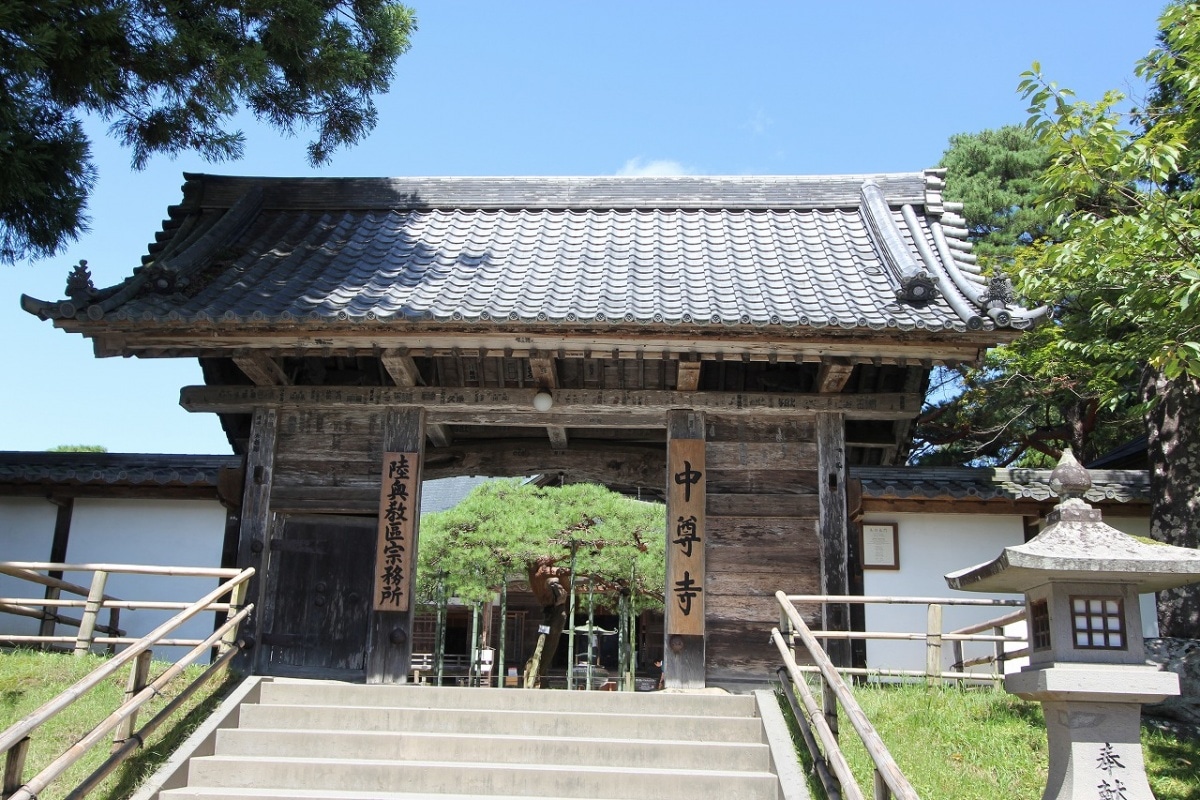
I saw tons of people touring the World Heritage locations carrying around their guidebooks and touch pens, just like me. I think since it is such a large sightseeing area, this system really comes in handy.
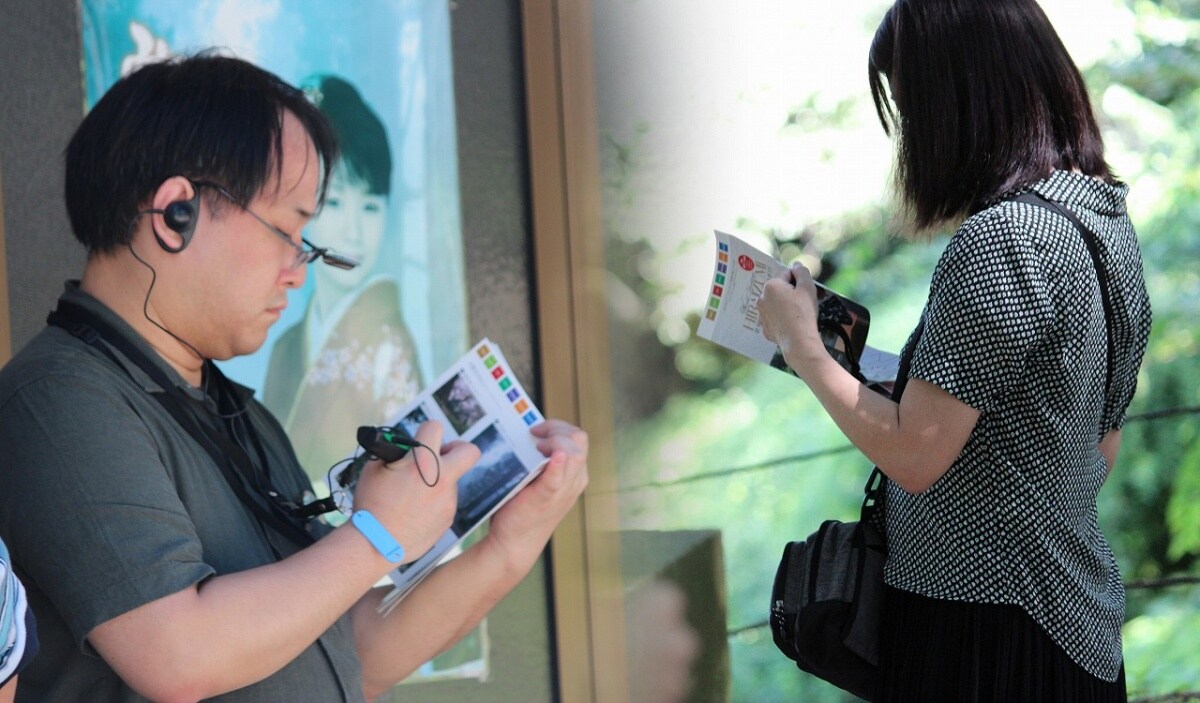
I tried coming into contact with the smoke among a group of people burning incense in front of the main temple building. Unlike in Korea, in Japan, many people apply incense smoke to their own body parts that they wish to heal.
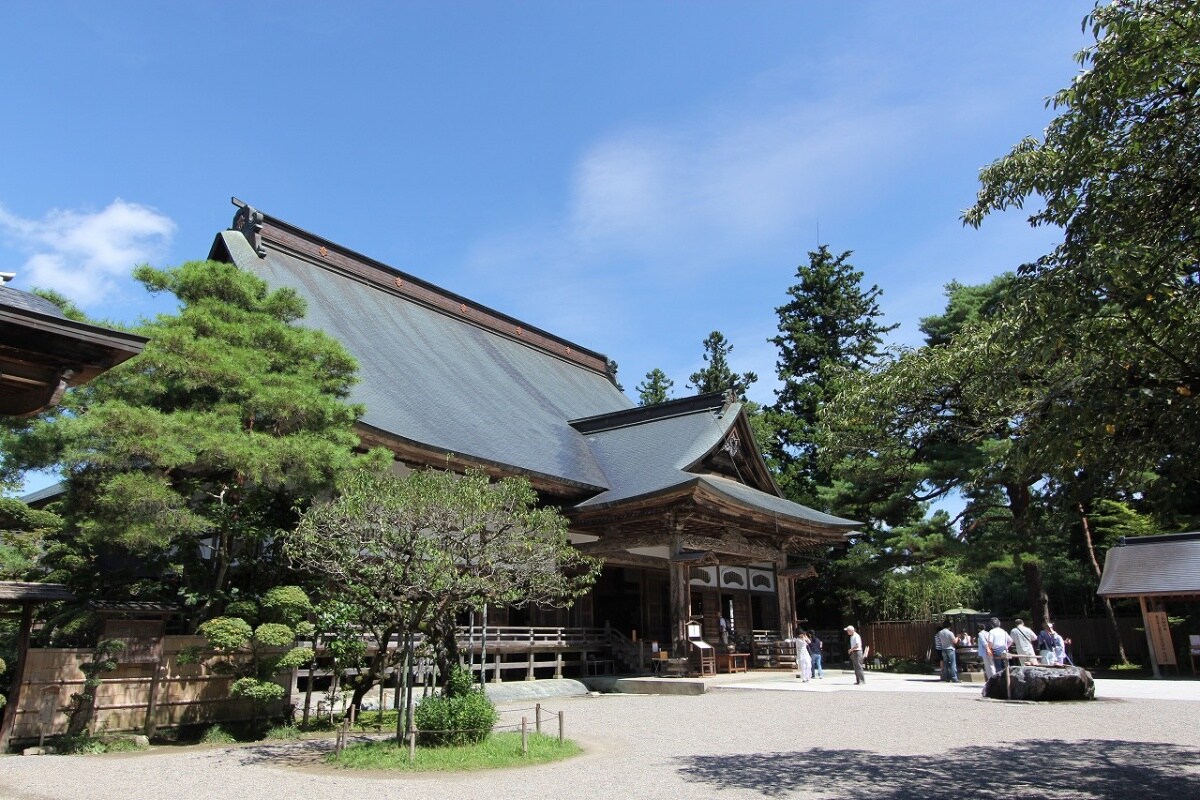
Past the main building, you have to climb the hill even further to reach Konjikido. Between patches of trees, you can see outer buildings that maintain their own natural tree colors. The leaves of the trees filtered the powerful sunlight, helping me forget how hot and humid it was.
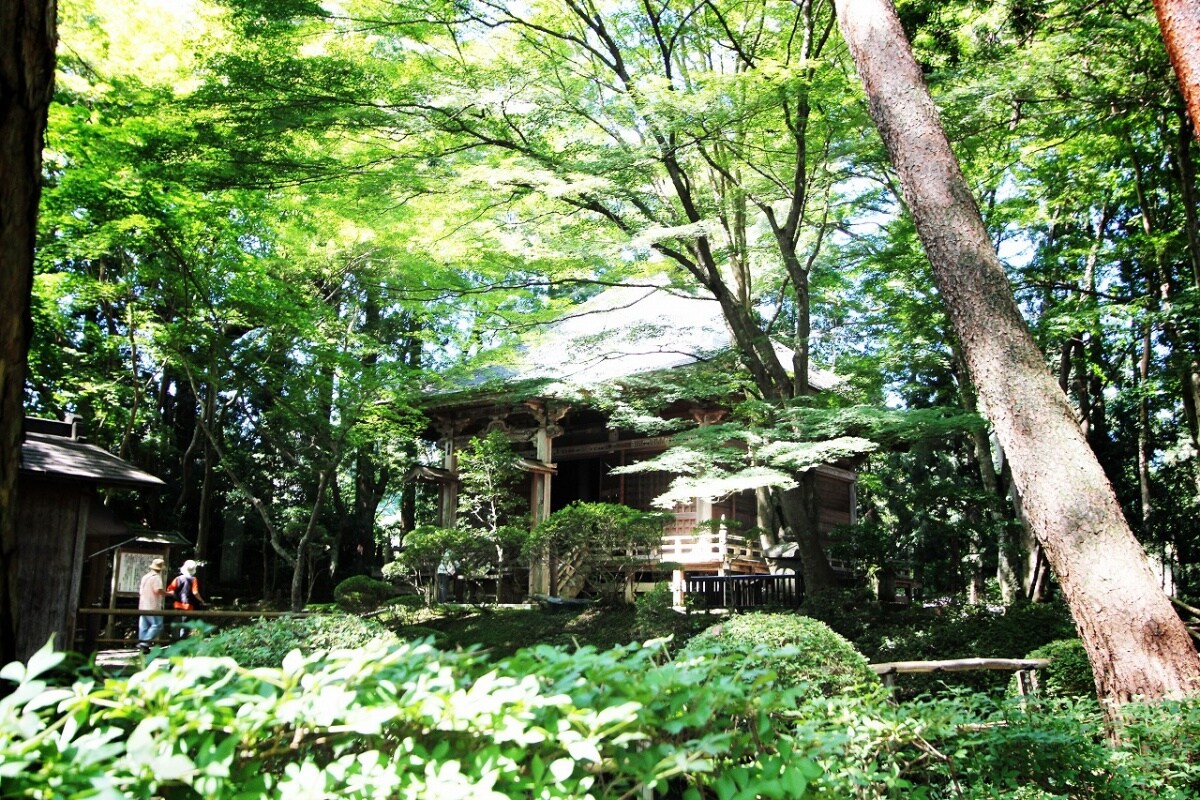
At last I arrived at Konjikido. Inside are splendid golf-leaf national treasures preserved as they were in the Heian Period. When you buy a ticket at the museum to look at the historical exhibitions, the ticket also grants you entry inside Konjikido. Before entering, I stood at the bottom of the staircase, taking in the fragrance of the cedar trees all around.

As I stood before it, with the midsummer sun, the singing of cicadas, and the calm breeze that cooled the perspiration on my body, it felt as if at the apex of this avenue of cedars, Konjikido was beckoning me to listen to its many tales of history. Photography is not permitted inside, but the whole building is covered in shimmering gold leaf. In the center of the building are seated Amida statues each with unique Bosatsu statues standing on either side of them, while the Amida Buddha’s Pure Land is embodied in many amazing arts and crafts of the Heian Period. Many of Chuson-ji’s buildings were also destroyed by fires, with Konjikido alone remaining in its original state.
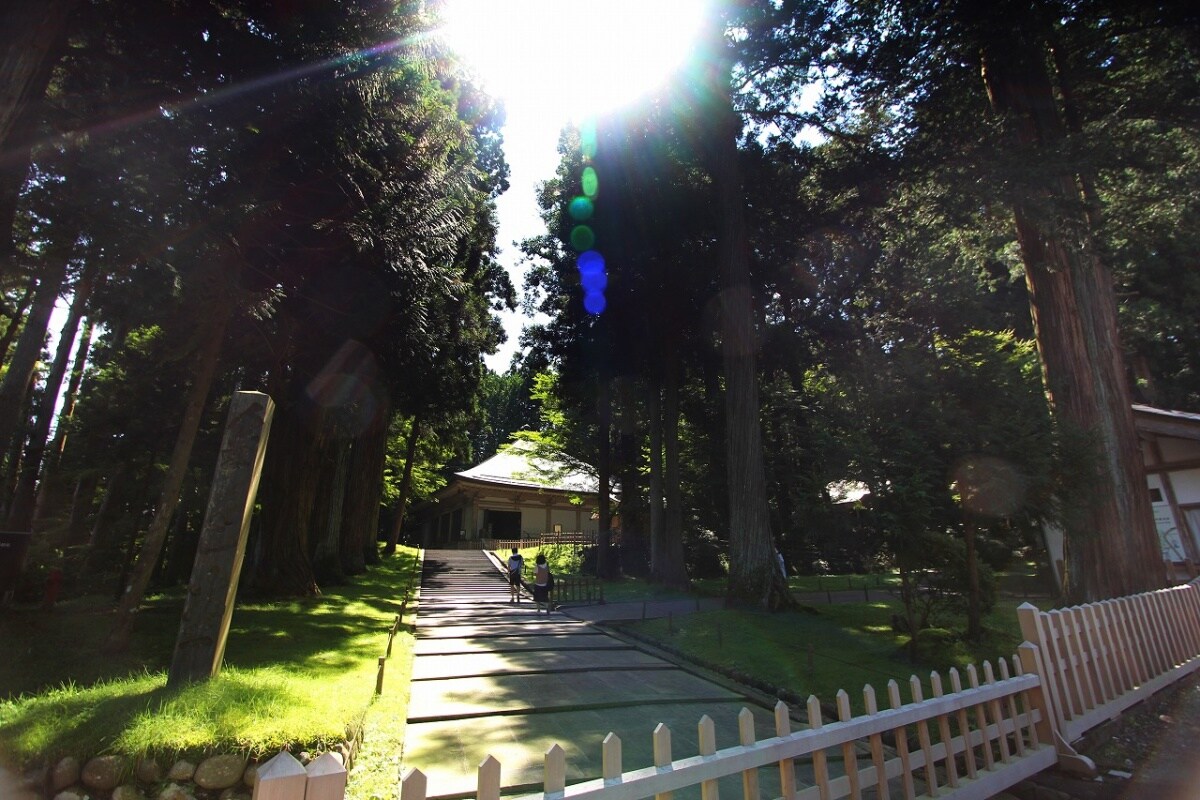
Leaving Konjikido, I walked along the pathways of Chuson-ji that continue seemingly forever. As I walked, I contemplated the decision of Fujiwara no Kiyohara, after the tragedy of losing his father and wife to wars, to recognize the service of all lives lost, enemies and allies alike. I felt grateful for these times of peace.
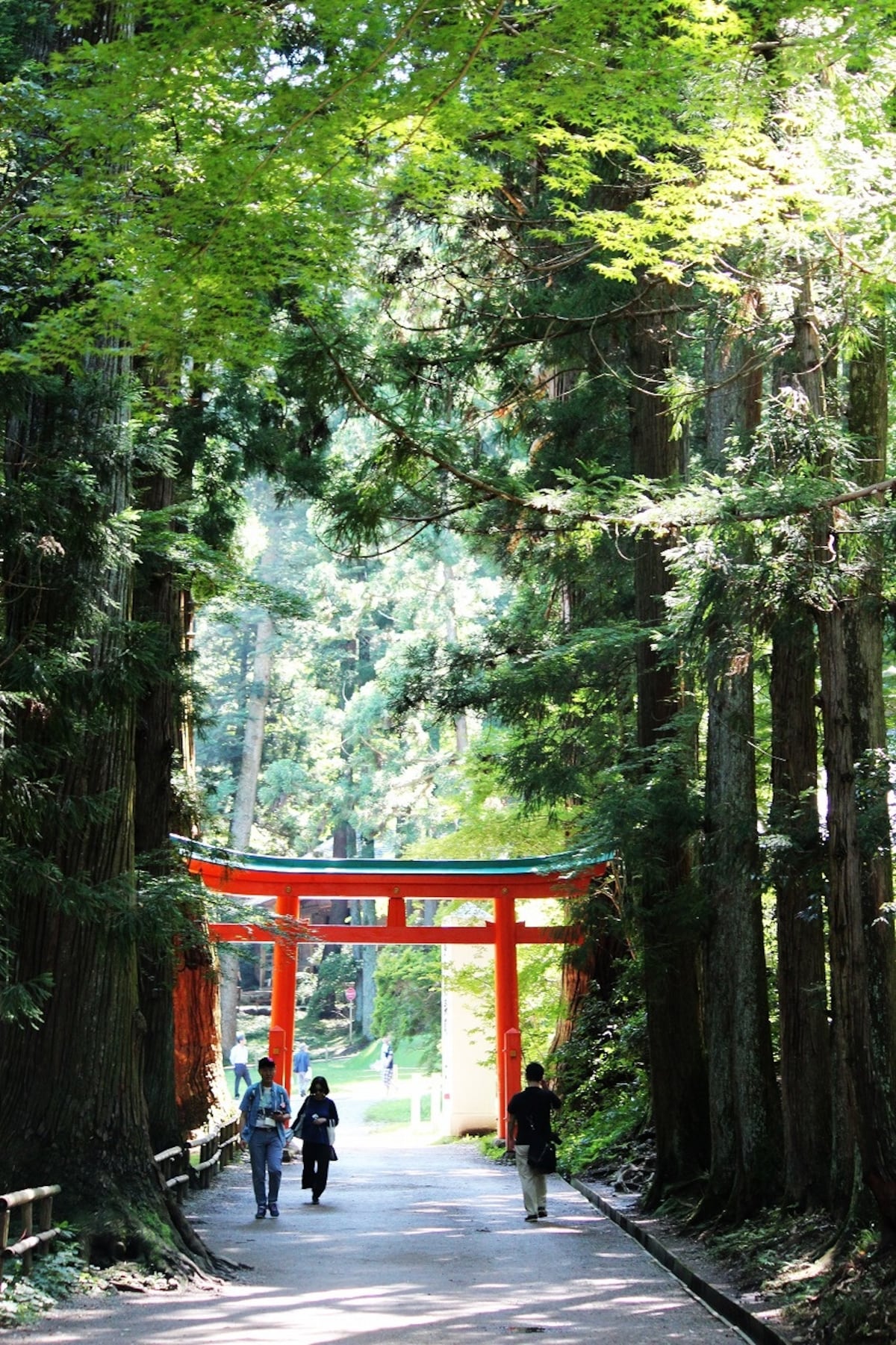
When I exited Chuson-ji, there were a number of places for returning the audio guide at the tourist information center and parking lot. The system was very convenient. You can return the guide anywhere even if it isn’t where you borrowed it, and there were return boxes for after hours when the information desk is closed.
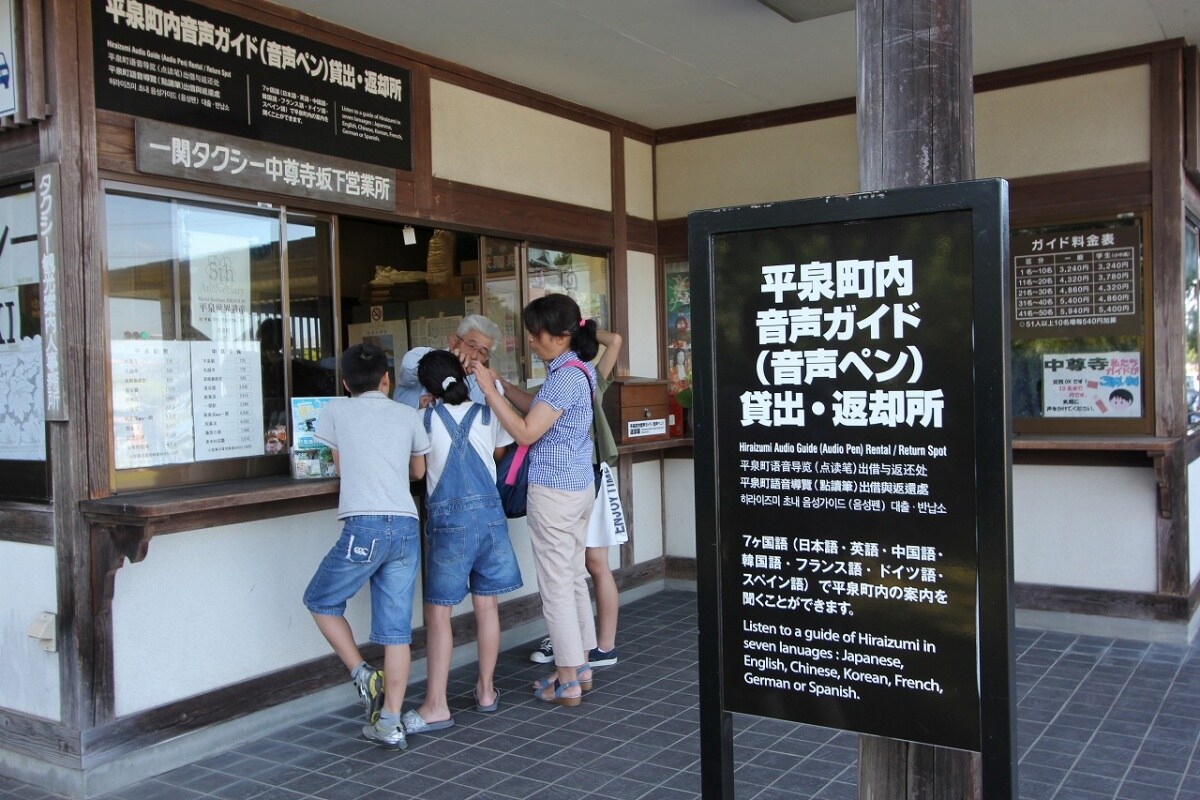
Afterward, I headed for Ichinoseki Station, which is a stop on the Tohoku Shinkansen. Ichinoseki is known as a big mochi town. Below is the sign for a rest stop on the national highway called Genbikei, a veritable mochi village. This area harvests a lot of glutinous rice, holds mochi events all year long, and the town is known for welcoming visitors with mochi entertainment and hospitality.
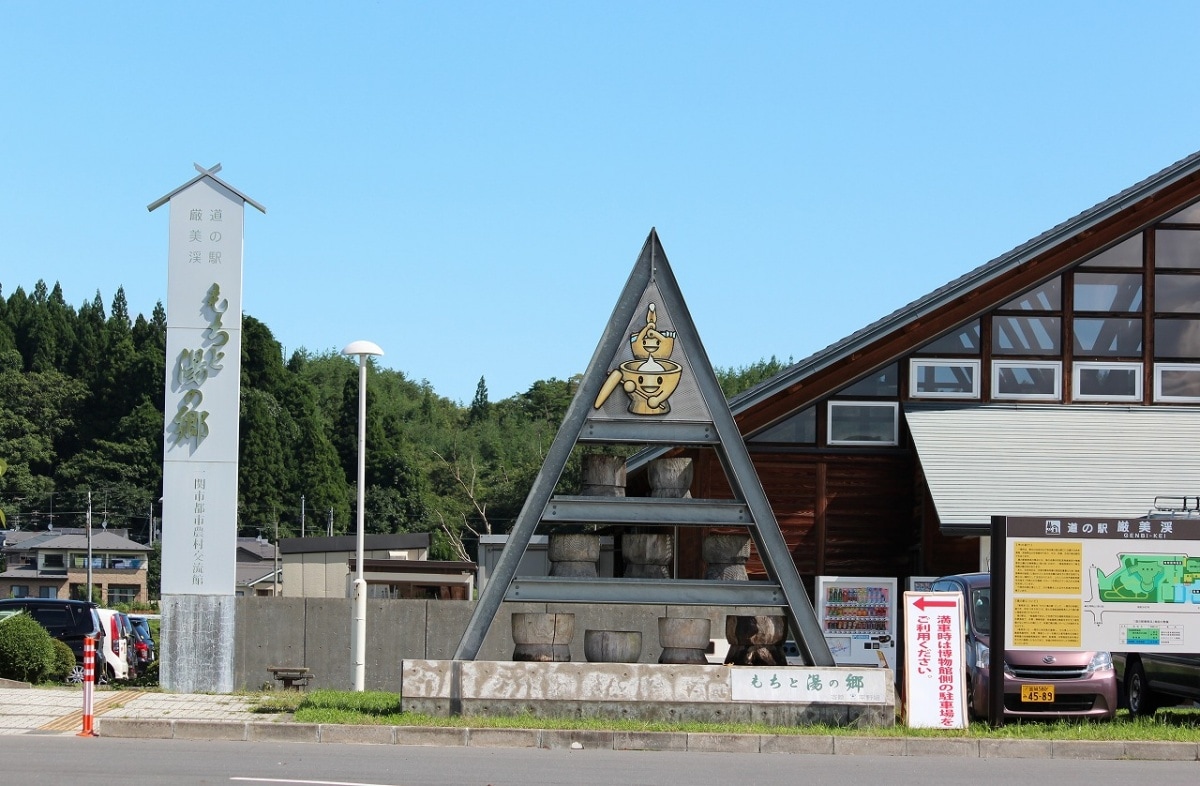
The Genbikei Rest Stop executive director, Mr. Konodera, greeted me with a bright smile. As expected, the hospitality here involved preparing mochi.
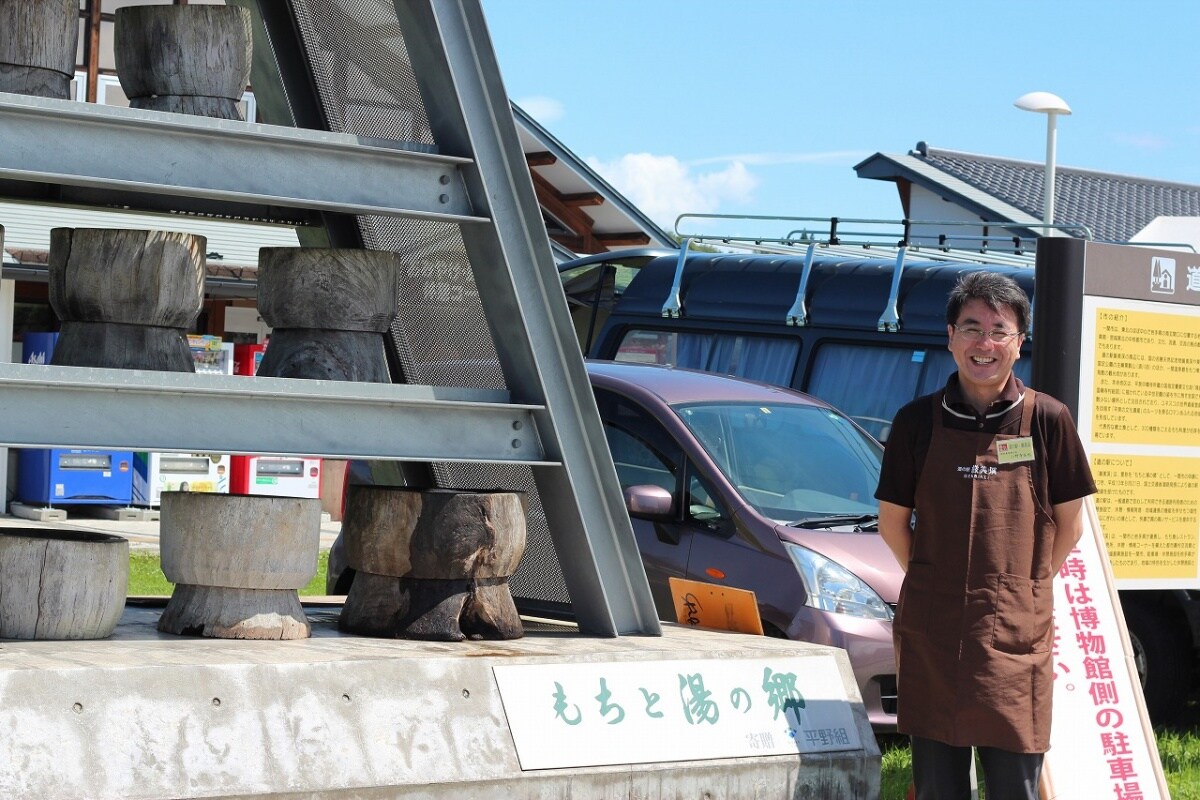
The fourth Friday of every month here is all-you-can-eat mochi day, and the event attracted a huge crowd. There is a variety of mochi culture in Korea as well, but here in Ichinoseki, they take it to a level unlike anywhere else. Konodera informed me that they prepare the mochi to order so they can serve it fresh, and they offer an array of toppings, even during all-you-can-eat.

I ordered the rest stop’s most popular menu item, the “Wafu Mochi Set,” which comes with an assortment of flavors, including grated daikon radish in the center to help with digestion, surrounded by black sesame, red bean paste, mashed soybeans, ginger, and more. The kitchen also cooks up mochi rice produced in the local area, and I was lucky enough to get a tour. With the steam rising up, freshly cooked mochi rice is placed into the machine, and the mochi is made by shifting it up and down with a white pole.





